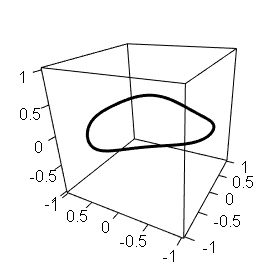Here is a photo of a test firing of the Space Shuttle main RS-25 engine from 1981 from here:
The top of the blue luminous area (a static shock wave?) looks like it has a corner.
Here is a screen shot from a YouTube Video of a July 17, 2015 test of the SLS RS-25 engine:
Below are animated GIFs to outline what looks to me like a rectangular cross-sectional shape. This is not a scientific analysis - it just appears rectangular to me.
Since the expansion and nozzle are (presumably) circular in cross-section, I wouldn't expect the profile to appear to have that corner.
Is it just me, or is there a significantly non-circular shape to the cross-section at this boundary, and if there is, why?
note: The question What (actually) is the cause of the blue light from LH2/LOX rocket engines? also addresses the abrupt luminescence at the shock wave boundary, as does the question Why do the exhaust flames from cryogenic stage engines appear to be separated from the nozzle?
1981:
2015:












